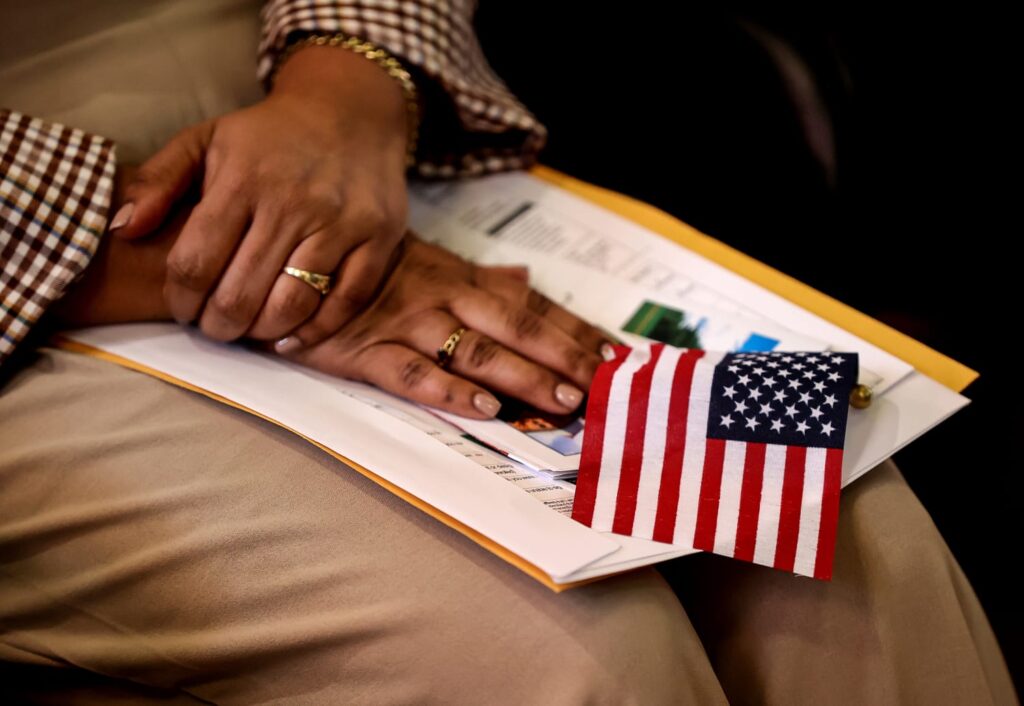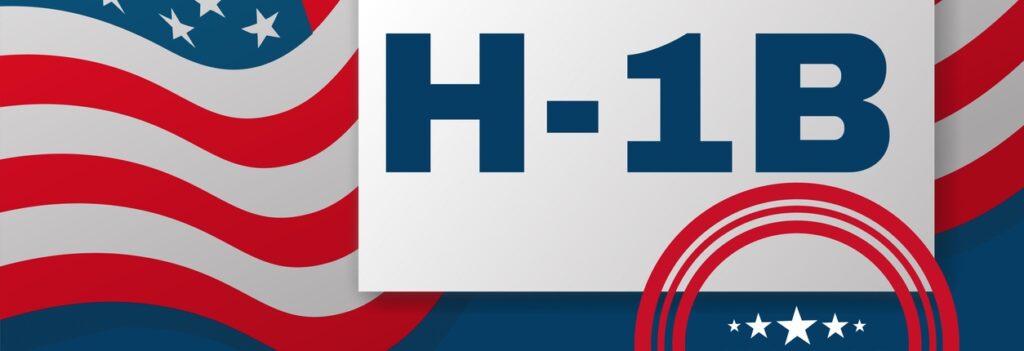Can we withdraw H1B amendment after RFE? This question keeps you up at night when you see that USCIS notice in your inbox. You’re stuck between a rock and a hard place: respond to an RFE that looks like it’s going south, or pull the plug and hope for the best.

Most people panic. They search online and find half-answers from forums, vague government memos, or attorneys who speak in riddles. The truth is, can we withdraw H1B amendment after RFE is not a simple yes or no question. It depends on your specific situation, and making the wrong move can cost you your legal status in the U.S.
This article cuts through the noise. You’ll learn exactly what happens when you withdraw an H1B amendment after getting an RFE, the consequences you face, and the strategic decisions that can save your immigration status. If you’re a professional on H1B, whether you’re a software engineer, researcher, business executive, or creative, this information applies to you.
Read Also: RFE for H1B Transfer: Win With Proven Strategies
What Actually Happens When You Get an RFE on Your H1B Amendment
An RFE (Request for Evidence) means USCIS needs more information before deciding on your amendment petition. It’s not a denial, but it’s not good news either.
Here’s what most people don’t understand: an RFE on an H1B amendment often signals that USCIS suspects something is off. Maybe they think you started working at a new location before filing the amendment. Maybe your employer’s financials don’t add up. Maybe the job description doesn’t match what you’re actually doing.
When you receive an RFE, you have two basic options:
- Respond with the requested evidence
- Withdraw the petition
But can we withdraw H1B amendment after RFE without consequences? Not exactly.
Can We Withdraw H1B Amendment After RFE? The Real Answer
Yes, you can withdraw an H1B amendment after receiving an RFE. Your employer (not you) has the legal right to withdraw any petition they filed on your behalf at any time, even after an RFE.
But here’s the part nobody emphasizes: withdrawing doesn’t make the problem disappear.
If USCIS issued an RFE because they suspect you violated your status (for example, by working at an unauthorized location), withdrawing the amendment won’t erase that concern. The question of whether you maintained a valid H1B status during that period remains open.
Who Can Actually Withdraw the Petition
You cannot withdraw your own H1B amendment. Only your employer (the petitioner) can request withdrawal. If you’re the beneficiary, you need to coordinate with your employer’s legal team or HR department.
The employer sends a formal withdrawal letter to the USCIS service center that’s processing the petition. This letter should include:
- Your case receipt number
- A clear statement requesting withdrawal
- The date employment ended (if applicable)
- A copy of the approval notice
USCIS typically processes withdrawal requests within a few weeks, though it can take longer.
What the Articles You Read Online Don’t Tell You
Most information about can we withdraw H1B amendment after RFE focuses on the mechanics. Here’s what they miss:
The RFE Itself Doesn’t Disappear
When you withdraw an amendment petition after an RFE, the RFE becomes moot; you don’t have to respond to it. But if the RFE raised concerns about your immigration status, those concerns don’t vanish.
For example, if USCIS questioned whether you maintained status because you started working at a new location before filing the amendment, withdrawing doesn’t prove you were in status. It just means you’re no longer pursuing that particular petition.
Your Immigration Status During the “Gap” Period
This is the big one. If you worked somewhere that required an amendment but didn’t file one in time, that period could be considered “out of status.” Withdrawing the late amendment doesn’t fix the underlying status violation.
Some people think: If I withdraw, USCIS won’t know about the gap. Wrong. USCIS can still investigate and make status determinations during future petitions, extensions, or green card applications.
Impact on Future Petitions
Can we withdraw H1B amendment after RFE without affecting future applications? Not necessarily.
If you withdraw and then file a new petition (transfer, extension, or another amendment), USCIS will review your entire immigration history. They can ask:
- Why was the previous amendment withdrawn?
- What was the RFE about?
- Were you in a valid status during the time in question?
You’ll need to disclose the withdrawal and potentially explain the circumstances. If the original RFE raised status concerns, those issues will resurface.
The Bridge Petition Problem
If your I-94 expires while an amendment is pending and you withdraw that amendment, you may encounter a bridge petition issue. This means that your legal status may be questioned if you attempt to transfer to a new employer.
Your current I-94 is tied to your approved H1B petition. If you have a pending amendment and withdraw it after your I-94 expires, you might not have a valid basis to claim you were maintaining status during that gap.
Strategic Considerations: Should You Withdraw or Respond?
Can we withdraw H1B amendment after RFE, or should we respond? Here’s how to think through this decision:
When Withdrawing Makes Sense
You’re leaving the employer anyway: If you’re transferring to a new company or leaving the U.S., withdrawing may be the cleanest option. The new employer will file a fresh H1B transfer, and you won’t waste time responding to an RFE for a petition you don’t need.
The amendment was filed incorrectly: Sometimes employers file amendments by mistake or for positions that no longer exist. If the amendment doesn’t reflect your actual situation, withdrawal prevents USCIS from making decisions based on incorrect information.
You’re returning to your original work location: If you filed an amendment for a new worksite but decided to stay at the original location (covered by your existing approved H1B), withdrawing makes sense. You don’t need the amendment.
When You Should Respond Instead
The RFE challenges your current status: If USCIS is questioning whether you maintained a valid H1B status, you need to respond. Withdrawing looks like you’re dodging the question, and the status concern will follow you.
Your I-94 is about to expire: If your current I-94 expires soon and you need the amendment to maintain status, you must respond. Withdrawing leaves you without authorization.
You’re planning to extend or transfer: If you’ll need to file for an extension or transfer soon, respond to the RFE. A withdrawal with unresolved status questions will complicate future filings.
You’re pursuing a green card: Any status concerns on your H1B can derail your green card application. It’s better to address the RFE head-on rather than leave questions unanswered.
The Financial Reality
Can we withdraw H1B amendment after RFE and get a refund? No. USCIS does not refund filing fees when you withdraw a petition. If you paid for premium processing, that money is gone, too.
Your employer is also not required to refund any legal fees they paid to prepare the amendment, though some companies might.
What Happens to Your Work Authorization After Withdrawal
If you withdraw an H1B amendment that was pending:
Before your I-94 expiry: You can continue working under your existing, approved H1B petition, as long as the conditions of that original petition haven’t changed. For example, if your original H1B was for a worksite in New York and you’re still working there, you’re fine.
After your I-94 expiry: This gets complicated. If your I-94 expired and you were relying on the pending amendment to maintain status (240-day rule), withdrawing the amendment could mean you’re out of status. You typically have a 60-day grace period to find new employment or leave the U.S., but it’s not guaranteed in all cases.
If you’re switching employers: If a new employer files an H1B transfer while your amendment is pending, your old employer should withdraw the amendment once you stop working for them. In this case, you maintain status through the new employer’s petition.
The Consular Processing Escape Hatch
Here’s a strategy that few people know about: if you have status concerns from a late or problematic amendment, you can request “consular processing” instead of “extension of status” on your next H1B petition.
Consular processing means you leave the U.S., get your visa stamped at a U.S. consulate abroad, and re-enter with a fresh I-94. This essentially wipes the slate clean on most status violations (though fraud or misrepresentation are different issues).
If you’ve been asking Can we withdraw H1B amendment after RFE because you’re worried about status violations, consular processing might be your best path forward. You’d withdraw the problematic amendment and have your employer file a new petition with consular processing requested.
Important: You cannot work in the U.S. after your I-94 expires if you choose consular processing. You’d need to leave the country, get your visa stamped, and return.
How VeriPass Can Help
Immigration decisions are personal, and every case is different. If you’re facing an RFE on your H1B amendment and wondering whether to withdraw or respond, you need clear, expert guidance.
VeriPass helps high-achieving professionals manage their U.S. immigration. While we specialize in O-1 and EB-2 NIW visas, pathways that don’t require employer sponsorship, we understand the H1B system and the challenges professionals face.
Here’s how VeriPass can support you:
Planning your next move: If you’re considering transferring employers or transitioning to a self-sponsored visa like the O-1 or EB-2 NIW, we provide personalized guidance on timing and strategy.
Long-term immigration strategy: Many H1B professionals eventually want green cards. We help you think beyond the immediate crisis and plan for permanent residency through employment-based pathways like EB-2 NIW, which doesn’t require employer sponsorship.
VeriPass isn’t about quick fixes. We’re about giving you the information and support you need to make smart decisions for your future in the U.S.
The Real-World Timeline: What to Expect
Let’s walk through a realistic scenario so you understand the timeline:
Day 1: You receive an RFE on your H1B amendment. USCIS typically gives you 30-90 days to respond.
Days 2-7: You and your employer discuss options. Should you respond or withdraw?
Days 8-14: If withdrawing, your employer sends the withdrawal letter to USCIS. If responding, you start gathering evidence.
Weeks 3-6: USCIS processes the withdrawal (usually 2-4 weeks, sometimes longer). If you responded to the RFE, USCIS takes 60-90 days to make a decision.

After withdrawal confirmation, you receive a letter confirming the petition was withdrawn. At this point, the petition is dead; you cannot revive it.
Common Mistakes People Make
Assuming withdrawal erases the problem: It doesn’t. If there were status concerns, they remain.
Withdrawing without a backup plan: If your I-94 is expiring soon, withdrawing without a new petition filed can leave you stranded.
Not involving their employer: You cannot withdraw the petition yourself. Some employees try to handle immigration matters solo, but the employer must be involved.
Thinking they can hide the withdrawal: Future petitions will ask about previous filings, RFEs, and withdrawals. You must disclose them.
Waiting too long to decide: RFEs have deadlines. If you’re going to respond, start immediately. If you’re going to withdraw, do it early enough that you have time to plan next steps.
If You’re Planning to Transfer to a New Employer
Can we withdraw H1B amendment after RFE if we’re transferring to a new employer? This is one of the most common scenarios.
Here’s the cleanest approach:
- Have the new employer file the H1B transfer BEFORE withdrawing the amendment. Once the transfer is filed, you can start working for the new employer on the receipt notice (H1B portability).
- Then have your old employer withdraw the pending amendment. They’re actually required by law to withdraw your petition once you stop working for them.
- Your status is maintained through the new employer’s petition. The withdrawal of the old amendment doesn’t affect your status because you’re covered by the new petition.
But timing matters. If your current I-94 has already expired and you’re maintaining status based on the pending amendment, coordinate carefully with your new employer’s attorney.
The 60-Day Grace Period Question
After an H1B petition is withdrawn, do you get the 60-day grace period?
It depends. The 60-day grace period applies when:
- Your employment ends (termination or resignation)
- You were in valid H1B status when employment ended
- You haven’t violated the terms of your status
If you withdraw an amendment but you’re still employed under your original H1B petition, the grace period doesn’t apply; you’re still working.
If your employment ends and your employer withdraws all your H1B petitions, you typically get 60 days (or until your I-94 expires, whichever is shorter) to either:
- Find a new H1B employer and have them file a transfer
- Change to another status (like H-4 dependent status if your spouse has a valid visa)
- Leave the U.S.
What USCIS Will Ask in Future Applications
When you file future H1B petitions, extensions, or green card applications, you’ll likely face questions like:
- Have you ever received an RFE on an immigration petition?
- Have you ever had a petition withdrawn?
- Have you ever been out of status in the U.S.?
You must answer these honestly. If you withdrew an H1B amendment after an RFE, you’ll need to:
- Disclose the withdrawal
- Explain why it was withdrawn
- Address any status concerns raised in the RFE
Don’t lie or omit this information. USCIS has records of all your filings. Misrepresentation is a serious immigration violation with permanent consequences.
Can We Withdraw H1B Amendment After RFE? The Bottom Line
Can we withdraw H1B amendment after RFE? Yes, but understand what you’re doing.
Withdrawal is a tool, not a solution. It stops the current petition but doesn’t erase history or fix status violations. In some situations, like transferring employers or no longer needing the amendment, withdrawal makes perfect sense. In others, especially when USCIS has questioned your status, withdrawal can create more problems than it solves.
The stakes are high. H1B status is temporary, and mistakes can derail your path to permanent residency or even force you to leave the U.S.

If you’re facing this decision, think through:
- Why did you get the RFE?
- What are USCIS’s concerns?
- What’s your next move (transfer, extension, green card)?
- Have you maintained valid status throughout?
And if you’re tired of the H1B uncertainty, the constant renewals, employer dependence, and amendment headaches, it might be time to explore self-sponsored visa options like the O-1 or EB-2 NIW.
Ready to take control of your U.S. immigration future? VeriPass helps exceptional professionals like you transition from employer-dependent visas to self-sponsored pathways. We provide personalized strategy, document support, and expert guidance to make your move to the U.S. smoother and more secure.
Visit VeriPass.org or schedule a consultation today. Your immigration questions deserve real answers, not guesswork.
Can the H-1B amendment be withdrawn?
Yes, an H-1B amendment can be withdrawn, but only by your employer (the petitioner), not by you as the beneficiary. Your employer sends a formal withdrawal letter to the USCIS service center processing the petition, including your receipt number and a request to withdraw. USCIS typically processes withdrawal requests within 2-4 weeks. However, withdrawing an amendment doesn’t erase any underlying status concerns that may have triggered an RFE. If USCIS questioned whether you maintained a valid status, those concerns remain even after withdrawal. Once withdrawn, the petition cannot be revived; your employer would need to file a completely new petition with new fees if circumstances change.
How long will the H-1B amendment take?
Standard H-1B amendment processing takes 3-6 months on average, though it can vary significantly by service center and current USCIS workload. If you use premium processing (currently not available for all amendment types), USCIS guarantees a decision within 15 calendar days. The good news is you can start working at the new location immediately after filing the amendment; you don’t need to wait for approval. This is based on the “authorized to work upon filing” provision. Keep your receipt notice as proof that the amendment was properly filed while you wait for the decision.
Can an H-1B amendment get rejected?
Yes, H-1B amendments can be denied. Common reasons include: failure to file the amendment before starting work at the new location (violating the Simeio decision requirements), insufficient evidence that the new position qualifies as a specialty occupation, concerns about the employer’s ability to pay the required wage, or LCA issues with the new work location. If your amendment is denied but your original H-1B petition is still valid, you can return to the worksite covered by your original petition as long as you can still meet those original conditions. However, if the denial is based on status violations (like working at an unauthorized location before filing), you may face serious consequences, including being required to leave the U.S.
Is it okay to continue in the original location for a while after the H-1B amendment for location change has been approved?
Yes, you can continue working at your original location after an amendment for a new location is approved. The amendment approval gives you the option to work at the new location; it doesn’t force you to move immediately or permanently. Your original H-1B petition remains valid for the original worksite. However, you must actually work at the location covered by a valid LCA. If you’re splitting time between locations, make sure both are covered by appropriate LCAs and that you’re tracking where you work. If you decide you’re not moving to the new location at all, your employer should withdraw the amendment to avoid confusion and potential wage liability under the new LCA. The key rule: you must always work at a location covered by a certified LCA that matches your actual work arrangement.
